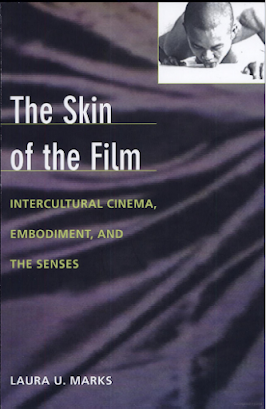Amie//Current Reading on Haptic Visuality - The Skin of the Film
"Haptic visuality does not depend on the viewer identifying with a recognizable figure/character but on a more sensuous bodily relationship between the viewer and the subject. Without representational mediation, the relationship between viewer and image is less one of viewer-engaging-object, than as a "dynamic subjectivity between looker and image." The haptic image is "less complete," requiring the viewer to contemplate the image as a material presence rather than an easily identifiable cog in a narrative wheel. By contrast, the optical image comes equipped with all the resources necessary to be complete, self-sufficient, and legible."
"Based on the textual descriptions provided by Marks, the formal and stylistic properties of haptic visuality in cinema include: synesthetic effects; changes in focus, graininess, underand overexposure, unclear imagery, and decaying film and video; optical printing and scratching on the emulsion; video effects and formats such as Pixelvision; the use of extreme close-ups, and alternating between film/video media. (To imagine a painting analogy, think of Impressionist and Post-Impressionist painting as haptic cinema, and 19th Century realist painting as optical cinema)."
This research has given me more direction and ideas in terms of the formal and stylistic properties of haptic visuality and the kinds of shots I will be looking for when gathering footage to include in my video.


